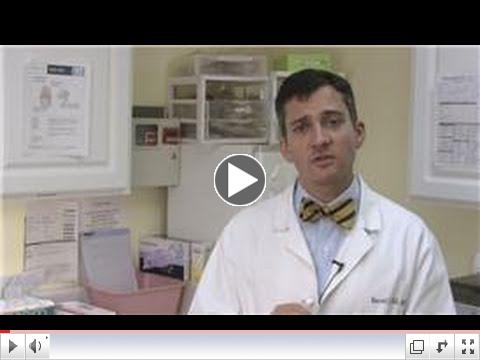|
Safety of Rabeprazole in infant gastrointestinal reflux disease (GERD).
| |
Rabeprazole is an antiulcer, proton pump inhibitor used to reduce stomach acid and to treat GERD. Recently (2013) the FDA has approved the delay release capsule for up to 12 weeks use in pediatric GERD patients 1-11 years of age.
A study of 231 infants aged 1-11 months with symptomatic (resistant to conservative therapy) GERD, treated firstly in a 1-3 week "open label", followed by a subsequent placebo control 5 week double-blind withdrawal phase trial, indicates that for a short treatment period (1-8 weeks) the drug appears to be long-lasting, safe and effective in improving GERD symptoms and infant weight.
Journal of Pediatric Gastroenterology & Nutrition
|
|
Lactobacillus acidophilus (LA) & rotavirus diarrhea.
| |
In a germ-free (gnotobiotic) pig model the effects of LA on rotavirus-specific antibody and B-cell response to orally administered attenuated human rotavirus was assessed by examining rotavirus shedding and diarrhea following a challenge with a virulent human rotavirus.
An Intermediate-dose LA (neither high nor low dose) appears to enhance the immunogenicity of a rotavirus vaccine with increased protection against rotavirus diarrhea.
Journal of Pediatric Gastroenterology & Nutrition
|
|
|
Download, print and pin this information on your office wall.
-This is a "Must Have" (Ed.)
|
|
Updates in Pediatrics is brought to you by:
| |
|
Pearl of wisdom: "We don't stop playing because we grow old. We grow old because we stop playing."
| |
|
Underwriting Opportunities
|
With a circulation of over 5,000, Updates in Pediatrics offers an excellent opportunity to promote your brand at affordable rates.
|
|
|
Stress management in children 7-9 yrs. of age.
It appears that school-aged children suffer high levels of chronic stress that may have long-lasting effects.
A pilot study evaluated the effects of mind-body integration practices (which address psychosomatic and somatopsychic relationships) with cooperative group activities given once weekly for 2 months, on the children's ability to cope with stressful moments and to function within a group setting.
Mind-body integration practices and special connectedness tools appear to be helpful in reducing childhood stress (and cortisol levels) while enhancing social interactiveness. Journal of Developmental & Behavioral Pediatrics |
Video Feature
 | | Pediatric Advice : How Do I Treat Infant Reflux? |
via YouTube
|
Chronic lack of sleep & sports injuries in adolescent athletes.
A survey of 112 student male and female athletes (grades 7-12; mean age 15 years) and their parents, relating training practices, sport related injuries and sleep amounts, indicates that all athletes who sleep <8 hours/night are 1.4-1.7 times more likely to suffer from athletic injury (while it has been known that moderate sleep loss is associated with impairment of psychomotor performance in adults, this apparently is the first study to document a similar effect in adolescents).
Journal of Pediatric Orthopedics
|
Fetoscopic approach to amniotic band syndrome (ABS).
ABS is a uncommon, random, non-genetic, congenital complication of pregnancy where fibrous string-like amniotic bands wrap in-utero, tightly around an infants' body part, restricting blood flow to the area ( the part grows but the band does not) . A variety of anomalies may occur; constriction rings around the digits, arms and legs are sometimes sufficient to cause amputation (ABS appears to have a relationship to club foot, club hands, cleft lip and/palate and hemangioma).
A small series of 5 patients with ABS of an extremity (of whom 4 had involvement of the umbilical cord) and diagnosed preoperatively underwent fetoscopic band release. Fetoscopic band release appears safe with good functional outcomes, though umbilical cord involvement may be difficult to assess preoperatively.
Journal of Pediatric Surgery
|
Testicular atrophy after orchidopexy for undescended testis.
A retrospective study of 1,400 attempted orchidopexies, for true undescended testes, was undertaken to estimate the incidence of, & associated risk factors for, post- orchidopexy testicular atrophy, indicates a 5% (for common low type) - 10% (high type) post-operative testicular atrophy rate. Risk factors include a high testicle, vas problems and pre-operative torsion. Pre-operative "Informed Consent" should include this information.
Journal of Pediatric Surgery
|
|
|